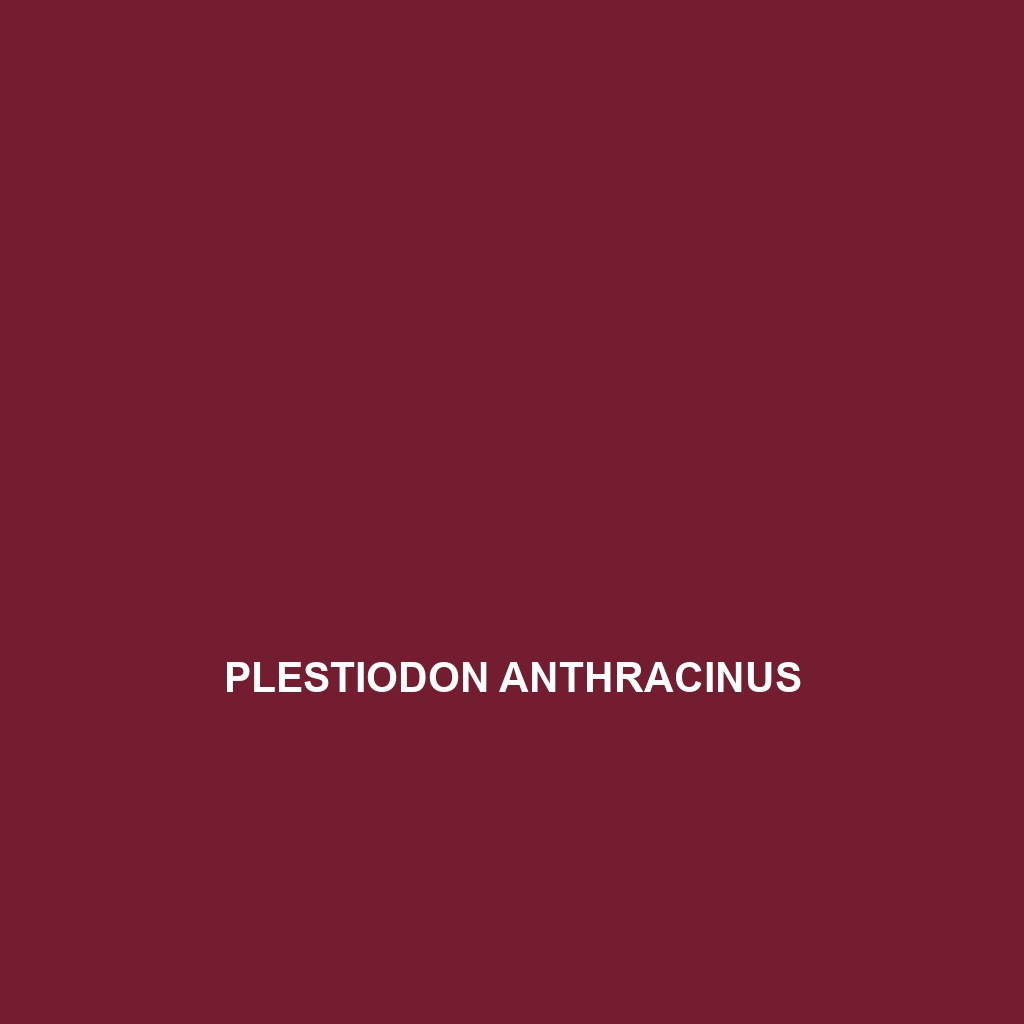Common Name
Plestiodon anthracinus
Scientific Name
Plestiodon anthracinus
Habitat
Plestiodon anthracinus, commonly known as the coal skink, primarily inhabits a variety of terrestrial environments in the eastern United States. This species is predominantly found in regions characterized by temperate forests, grasslands, and occasionally, shrublands. They thrive in moist areas such as forests that contain leaf litter and rocky outcrops, which provide shelter and substrates for thermoregulation. They can also be found in savannas where open areas allow for basking in sunlight. The coal skink is well-suited to habitats with a humid climate, which facilitates its active foraging and mating behaviors. The presence of dense undergrowth and debris is crucial for their survival, offering places for temperature regulation and evasion from predators.
Physical Characteristics
Plestiodon anthracinus exhibits distinct physical traits that set it apart from other lizard species. Adults typically measure between 20 to 30 centimeters (8 to 12 inches) in length. They have elongated, slender bodies and a flat head, which aids in navigating through their terrestrial habitat. The coloration of the coal skink varies; in general, they feature a dark, bluish-black or brownish dorsal surface adorned with bright, creamy-yellow stripes running along the sides. These contrasting colors help in camouflage among the forest litter and rocky substrates. One distinctive feature is their smooth, shiny scales which help in reflecting sunlight, an adaptation to their habitat that protects them from overheating during warm months.
Behavior
Behaviorally, Plestiodon anthracinus is primarily diurnal, meaning that they are most active during the day. They exhibit a range of interesting behaviors, including a tendency to bask in the sun for thermoregulation, essential for their ectothermic physiology. Although they are not known for migration, coal skinks will forage widely for food within their territories. Socially, they are relatively solitary creatures, although they may congregate during the breeding season. Their mating rituals are characterized by elaborate displays, including head bobbing and circling, particularly in males trying to attract females. These lizards have been observed using both chemical and visual signals to communicate with potential mates.
Diet
Plestiodon anthracinus is an omnivorous species, primarily feeding on a diet abundant in insects. Their diet predominantly consists of beetles, ants, spiders, and other small invertebrates. They are skilled hunters, using their keen eyesight to locate prey. Although primarily insectivorous, they may occasionally consume small plants or fruits, especially during the summer months when food is abundant. Their feeding patterns typically involve ambush tactics, where these lizards will patiently wait for their prey to come within striking distance before executing a quick capture.
Reproduction
The reproductive cycle of Plestiodon anthracinus commences in late spring to early summer, coinciding with warmer temperatures that trigger the mating season. Males will establish territories and engage in competitive displays to court females. After mating, females lay a clutch of approximately 4 to 12 eggs in a secluded area, such as under rotting logs or in leaf litter. The incubation period lasts about 6 to 10 weeks before the eggs hatch. The young lizards, known as hatchlings, are independent right from birth and must fend for themselves. Parental care is non-existent, prompting the hatchlings to quickly disperse to minimize competition for resources.
Conservation Status
The conservation status of Plestiodon anthracinus is currently classified as of “Least Concern” by the International Union for Conservation of Nature (IUCN). However, local populations may face threats due to habitat destruction from urban development and agriculture. Conservation efforts focus on habitat preservation and restoration, emphasizing the importance of maintaining forested areas and preventing fragmentation of their habitats. These efforts are crucial for ensuring the long-term survival of this species in the wild.
Interesting Facts
One of the fascinating aspects of Plestiodon anthracinus is its remarkable ability to regenerate its tail. Like many lizard species, if threatened by predators, they can shed their tails as an escape mechanism, and can eventually regrow a new one. This unique adaptation not only aids survival but also plays a significant role in distraction, as the detached tail may continue to wiggle, drawing attention away from the escaping lizard. Additionally, coal skinks have a relatively long lifespan for lizards, often living up to 5 years or more in the wild with proper environmental conditions.
Role in Ecosystem
Plestiodon anthracinus plays a crucial role in its ecosystem as both predator and prey, contributing to the health and balance of its habitat. As insectivores, they help control insect populations, reducing the ecological impact of pests on plants. Their interactions with prey also extend to contributing to the food web, as these skinks serve as prey for a variety of birds and larger mammals. Moreover, the presence of coal skinks often indicates a healthy ecosystem, highlighting the importance of maintaining biodiversity. Their role as a keystone species underscores the necessity of conservation efforts aimed at sustaining their population.
